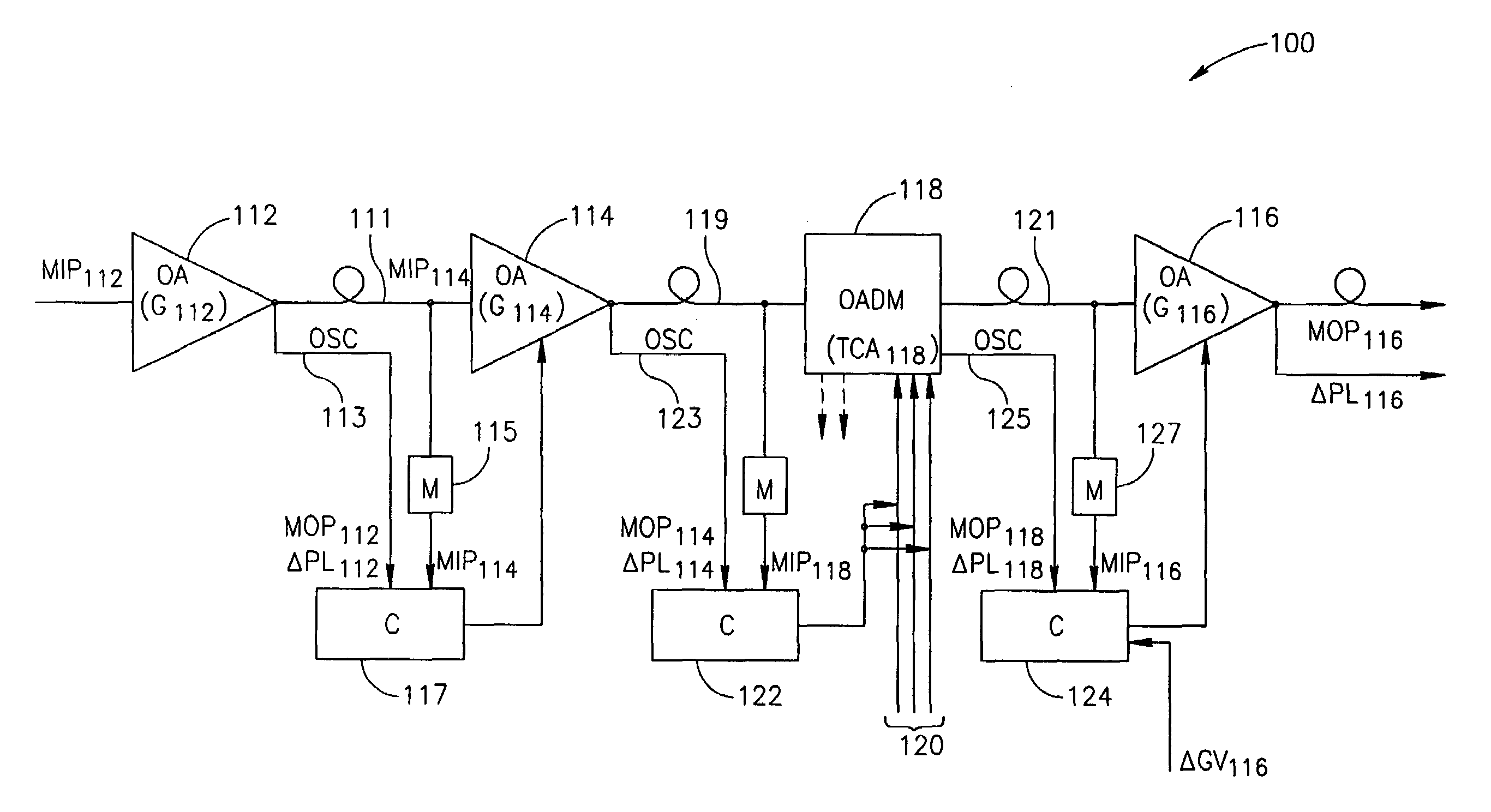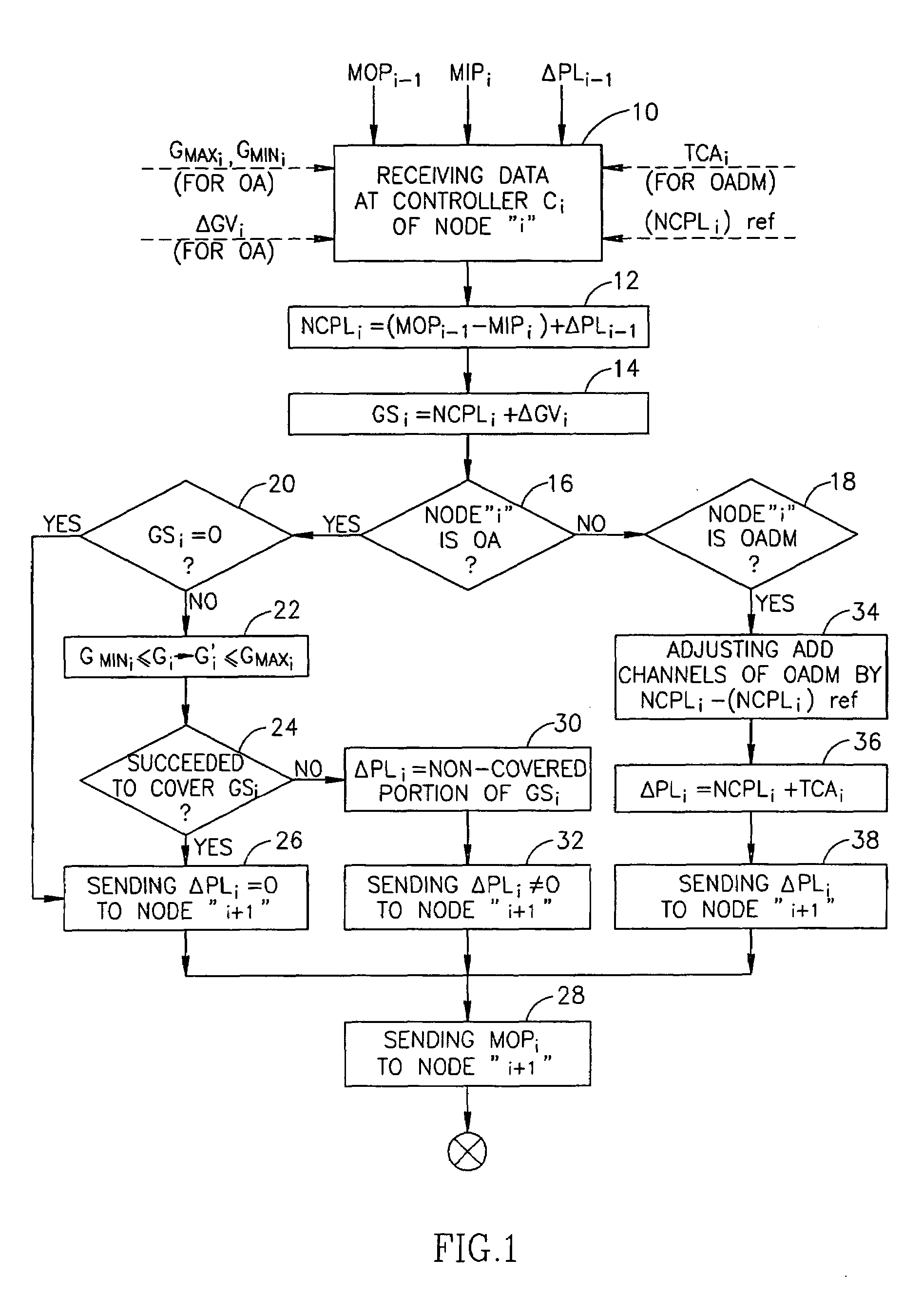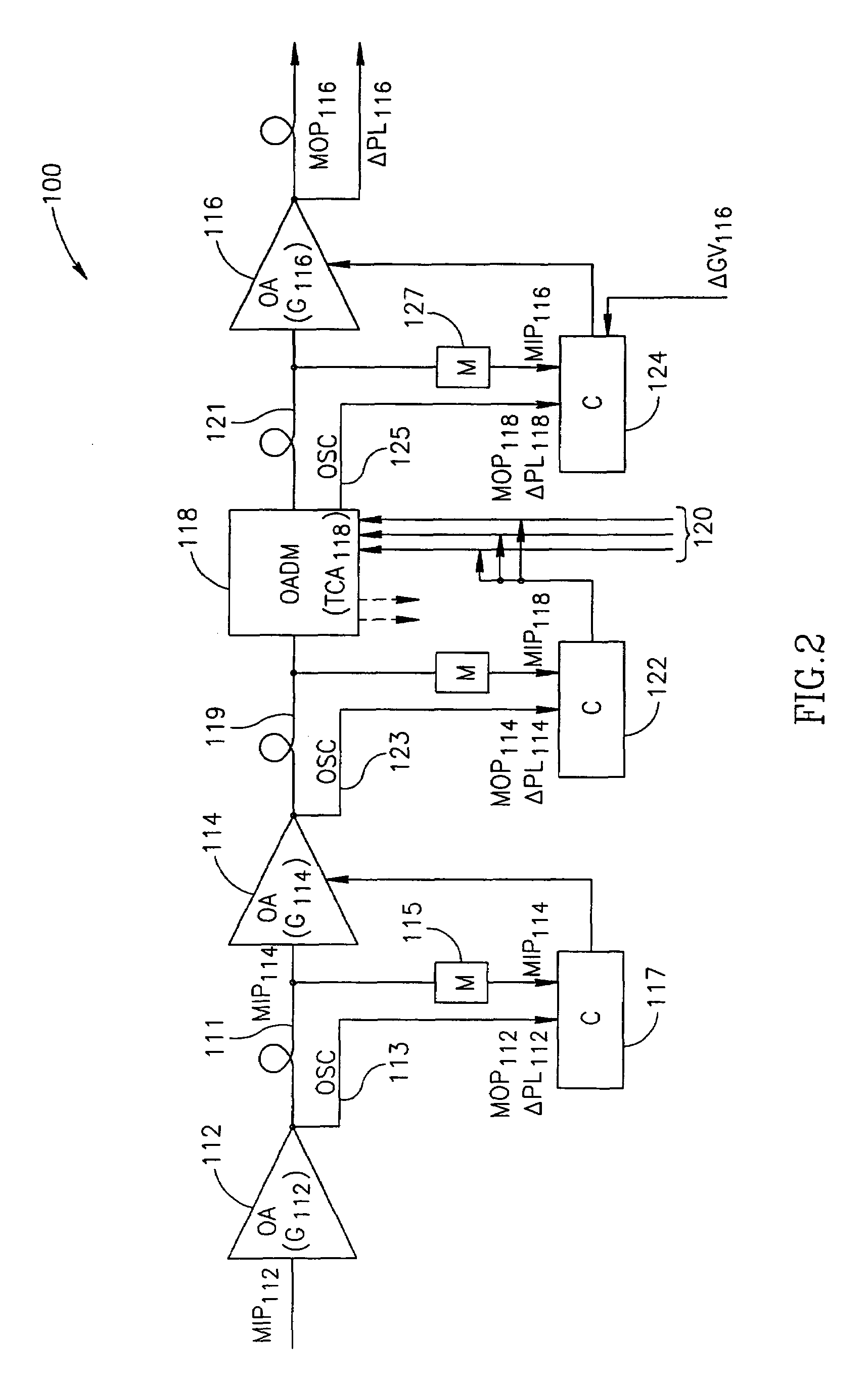Technique for power control in optical networks
a technology of optical network and power control, applied in the field of power control in optical network, can solve the problems of incorrect reaction of the system, degradation of the optical performance of the system, and inability to correctly adjust the output power of the amplifier in the link, so as to achieve maximum operation and simple power control
- Summary
- Abstract
- Description
- Claims
- Application Information
AI Technical Summary
Benefits of technology
Problems solved by technology
Method used
Image
Examples
Embodiment Construction
[0081]To explain the invention in more detail, let us consider any two adjacent nodes in the optical chain. Let we have the 1st or preceding node and the 2nd or present node. Each of the nodes is either an optical amplifier or OADM. The 1st node receives an optical signal from a preceding node via a 1st optical span, and is connected to 2nd node via a 2nd optical span. As mentioned, any of the nodes may constitute an amplifier having its gain that can be regulated up to its maximal gain, or an OADM which does not have a gain while has a capability to regulate power of add channels according to power of incoming channels. A real chain may comprise passive elements which just pass there-through both the information channels and the supervisory channel of the optical transmission; such elements will be considered portions of optical fiber spans, and not the nodes. Nodes may either have embedded processors, or use a centralized one.
[0082]The 1st node should be capable to send two kinds ...
PUM
 Login to View More
Login to View More Abstract
Description
Claims
Application Information
 Login to View More
Login to View More - R&D
- Intellectual Property
- Life Sciences
- Materials
- Tech Scout
- Unparalleled Data Quality
- Higher Quality Content
- 60% Fewer Hallucinations
Browse by: Latest US Patents, China's latest patents, Technical Efficacy Thesaurus, Application Domain, Technology Topic, Popular Technical Reports.
© 2025 PatSnap. All rights reserved.Legal|Privacy policy|Modern Slavery Act Transparency Statement|Sitemap|About US| Contact US: help@patsnap.com



